In the period concerned 1935-1960 only two categories of binding - two major weaving techniques existed that would be found reflected in the paper wire (mesh) that forms the background of our watermarks!
The warp is the vertical thread in the loom, the weft is the filling yarn that will be fed through the warp threads from left to right, right to left, etc.
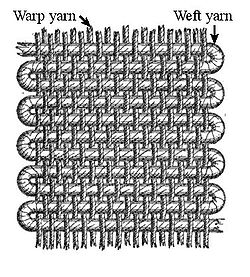
From the very beginning of the machine-made paper "plain weave" or linen-binding had been used. This continued into the 1970-ies, but most of the paper manufacturers had been changing to the more flexible twill weave and certainly with the availability of plastic fibres twill weave became dominant and later on even more complex weaving patterns were introduced.
The twill weave we will find only from 1938 onwards. In Argentinean postage stamps this is to be found in what is called "papel rayado" since 1944 [or maybe bit earlier?]. The twill weave is a-symmetrical hence my use of the term "a-symmetrical paper wire".
Plain weave is symmetrical and as the vertical threads are usually more dense [30/cm horizontally] than the horizontal threads [20/cm vertically] we see a stretched rhomboid in the vertical direction. This the so-called "granulado"!!!
When the vertical threads are not so densely planted, let's say 24/cm horizontally or a bit less, we get to see what was called here "Tela"
"Plain weave is the simplest type of weave. A single weft is progressively passed over one warp and under the next warp, working across the width of the loom. The weft is then passed back through warps in the opposite direction alternating from the previous over-and-under pattern. Variations are possible by using double or tripled warp or weft threads in a variety of combinations."
"Warp-faced weave fabric has greater number of warp threads per centimeter, while weft-faced weave fabric has a greater number of weft threads per centimeter. When both the warp and weft threads are equal in number per centimeter, it is termed balanced weave. All textiles fall into one of these categories."
The quoted texts are from the Brigham Young University website with the screen-copies I made added to the text. Similar texts and sites can be found by Googling "twill weave".....
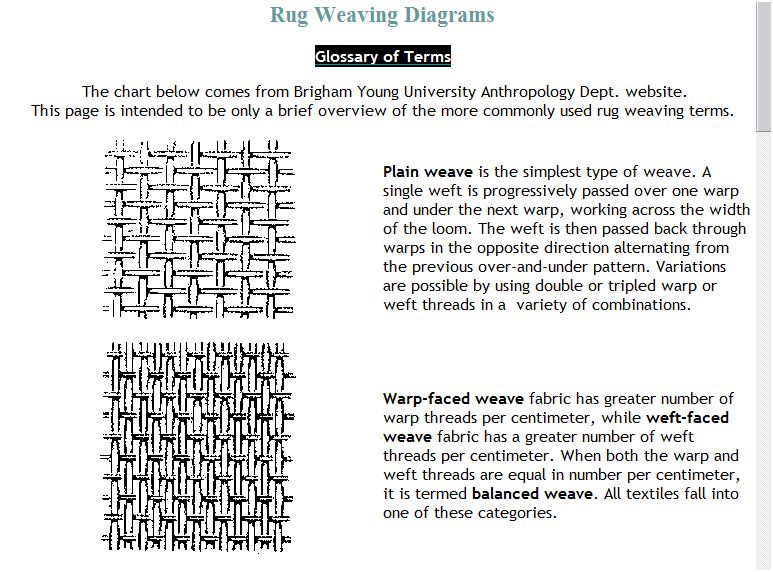
"granulado":
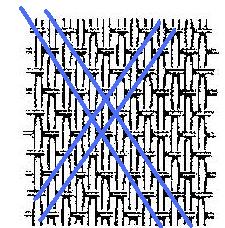
"Twill weave is similar to plain weave in that the weft passes over and under warp threads. However, warp yarns are skipped at predetermined intervals to create a diagonal rib in the weave."

"rayado":
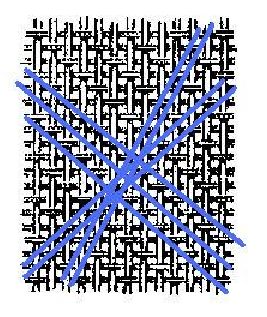
The twill being asymmetrical is more prone to torsion than the plain weave and this results in the visual effect of slghtly ascending or descending lines - red in the scheme - that helps givng the impression of "rayado".
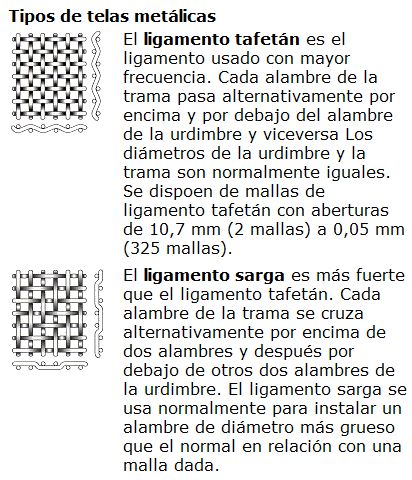
 The subsequently described watermarks needed to be related to
the dandy-roll both in the sense of orientation:
The subsequently described watermarks needed to be related to
the dandy-roll both in the sense of orientation: